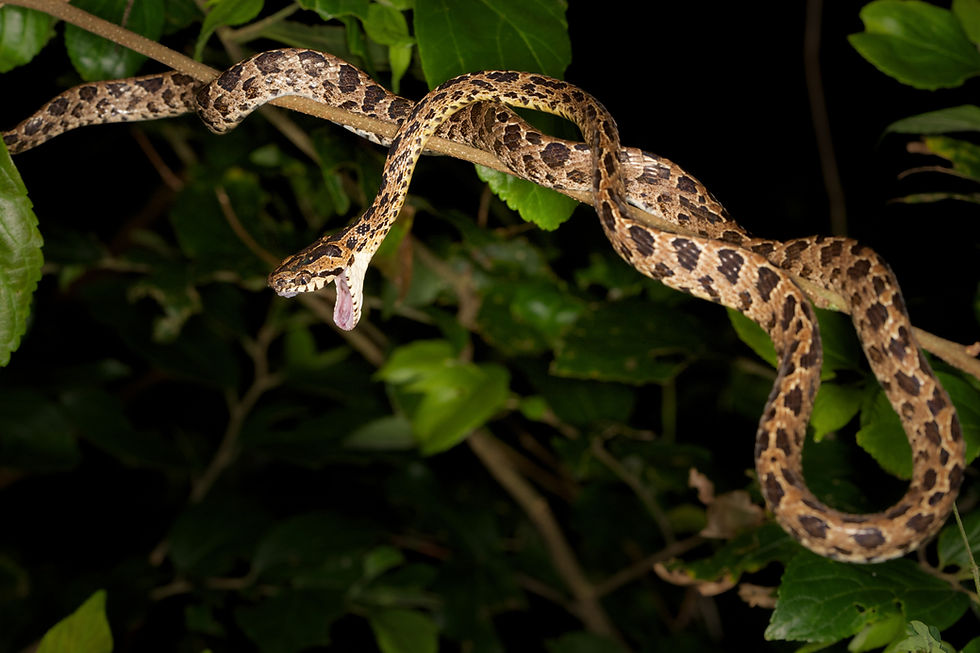Why do snakes yawn?
- Wildcreatures
- Apr 21, 2022
- 2 min read
Well, snakes do not yawn because they are tired! Most pictures you see of snakes appearing to strike - like this one - are of snakes yawning, or "gaping" as it is also known. This is because it is very difficult to capture a strike given the speed and lack of warning, whereas "yawns" can sometimes be predicted, as they often follow on from another one, like this snake, taken at night, on his second yawn.

There are two main reasons why they gape like this:
1. To realign their jaw, often after a meal. Contrary to popular knowledge, snakes do not unhinge their jaws. Rather, their lower jaw isn't attached by bone in the first place, nor is it even in one piece—it's separated in the middle and attached by ligaments, allowing one side to move independent from the other side. So they may need to wriggle their face around in a yawn to make sure everything fits comfortably.
2. Science now tells us that they may gape to pick up more information about their environment, in the same way that they flick their tongues. On the roof of the snake's mouth is the vomeronasal organ also known as the "Jacobson's Organ", and when a snake opens its mouth wide or flicks its tongue in and out, the tongue makes contact with the opening of this organ after the tongue is retracted. This allows the snake to pick up and interpret these environmental cues....which is probably what this snake in the picture is doing.
The only other reason for yawning - and its important if you keep snakes -could be a respiratory infection. This snake is a Large-spotted Cat Snake 繁花林蛇, often found in trees and low bushes, at night.
For more info on this and other snakes see our amaaaaazing sister site www.hongkongsnakeid.com. www.hongkongsnakeid.com .







Comments